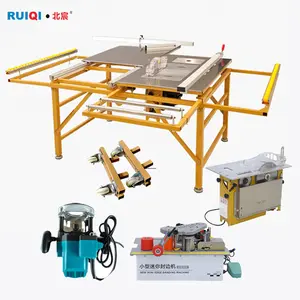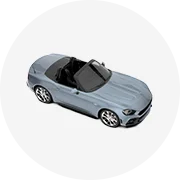





LUXTER 254mm 2400Wスライディングマイターソーアルミニウムウッドプラスチック木工ベンチトップマイターソー
すぐに出荷可能
JP¥18,402 - JP¥20,147
最小注文: 1 ピース
1個あたりの配送: JP¥13,435






高品質チェーン安全カバー自動スライディングスモールテーブルパネルウッドカッター木工ポータブルMdfソー
JP¥46,003 - JP¥63,453
最小注文: 1 セット
1個あたりの配送: JP¥74,425







SINO STAHLDY46ミニ折りたたみ式ポータブルパネルソー合板カット木工安い中国ボードウッドソーマシンスライディングテーブルソー
すぐに出荷可能
JP¥92,799 - JP¥142,768
最小注文: 1 セット
1個あたりの配送: JP¥126,905






メラミン木材切断CNCスライディングテーブルソーマシン3200mmウッドソー垂直パネルソー家具用ポータブルパネルソー木材mdf
JP¥273,638 - JP¥515,550
最小注文: 1 セット
1個あたりの配送: JP¥793,153


















メラミン木材切断CNCスライディングテーブルソーマシン2800mmウッドソー垂直パネルソーポータブルパネルソー家具用ウッドmdf
JP¥245,878 - JP¥314,089
最小注文: 1 ピース
1個あたりの配送: JP¥793,153


















ポータブル折りたたみ式円形テーブルソースライディングテーブルソーパネルソーウッドソーマシンテーブルソー木工用
JP¥42,672 - JP¥55,521
最小注文: 1 セット
1個あたりの配送: JP¥317,262






ミニテーブルソーパワーポータブル精密木材切断機スライディングテーブルパネルソー8000/min 4000/6000/min 1.1kw 120mm 300mm
JP¥364,851 - JP¥396,577
最小注文: 1 セット
1個あたりの配送: JP¥317,262












HZ507小型円形CNCポータブル木材切断スライディングパネルソーマシンテーブルソーマシン木工用
JP¥142,768 - JP¥237,946
最小注文: 1 セット
1個あたりの配送: JP¥3,606












ポータブル木工精密テーブルソー水平パネルソーマシン折りたたみパネルソースライディングテーブルソーマシン
JP¥104,697 - JP¥118,973
最小注文: 1 セット
1個あたりの配送: JP¥673,387






ポータブルパネルは見ましたについて
あなたの子供、姪または甥のための完璧なかわいい仲間を探しているなら、Alibaba.com以上のものを探す必要はありません。 ポータブルパネルは見ました。猫、クマ、犬、象、鳥、虎など、さまざまな色と愛らしい品種があります。これら。 ポータブルパネルは見ましたは、子供とすべての大人の子供を同じように喜ばせるはずです。ポータブルパネルは見ましたは、子供たちが共感を育むための重要なおもちゃであり、大切な人への贈り物。
。 Alibaba.comで提供されるポータブルパネルは見ましたは、ユーザーの幸福を保証するために一連の安全性テストを受けた最高品質の素材から作られています。鋭利な内部プラスチックやワイヤーはなく、皮膚の炎症を引き起こさないように特別に設計されています。これら。 ポータブルパネルは見ましたは、軽量で柔らかく、持ち運びに便利なように設計されています。いくつか。 ポータブルパネルは見ましたには、音声を鳴らしたり、音声メッセージを録音したりする機能など、魅力的な機能も追加されています。
ポータブルパネルは見ましたは、家庭用ペット、海洋動物、絶滅危惧種など、さまざまな種類やコレクションで利用できます。これら。 ポータブルパネルは見ましたはギフトに最適で、保育園用の小さいサイズから、数フィートまでの大きいサイズで利用できます。ポータブルパネルは見ました漫画に関連するアニメ映画も提供されており、子供たちに大人気です。
最も柔らかいものを選択してください。 ポータブルパネルは見ました子供向けまたはAlibaba.comでのギフト目的で品質を犠牲にすることなく最低価格で.. ポータブルパネルは見ました卸売業者やサプライヤーもISOを見つけることができます大量購入のための手頃なオファーでのCE認定製品。最も信頼できる売り手とメーカーが提供する製品は、安全性について十分にテストされていますのでご安心ください。
。 Alibaba.comで提供されるポータブルパネルは見ましたは、ユーザーの幸福を保証するために一連の安全性テストを受けた最高品質の素材から作られています。鋭利な内部プラスチックやワイヤーはなく、皮膚の炎症を引き起こさないように特別に設計されています。これら。 ポータブルパネルは見ましたは、軽量で柔らかく、持ち運びに便利なように設計されています。いくつか。 ポータブルパネルは見ましたには、音声を鳴らしたり、音声メッセージを録音したりする機能など、魅力的な機能も追加されています。
最も柔らかいものを選択してください。 ポータブルパネルは見ました子供向けまたはAlibaba.comでのギフト目的で品質を犠牲にすることなく最低価格で.. ポータブルパネルは見ました卸売業者やサプライヤーもISOを見つけることができます大量購入のための手頃なオファーでのCE認定製品。最も信頼できる売り手とメーカーが提供する製品は、安全性について十分にテストされていますのでご安心ください。































































































































































